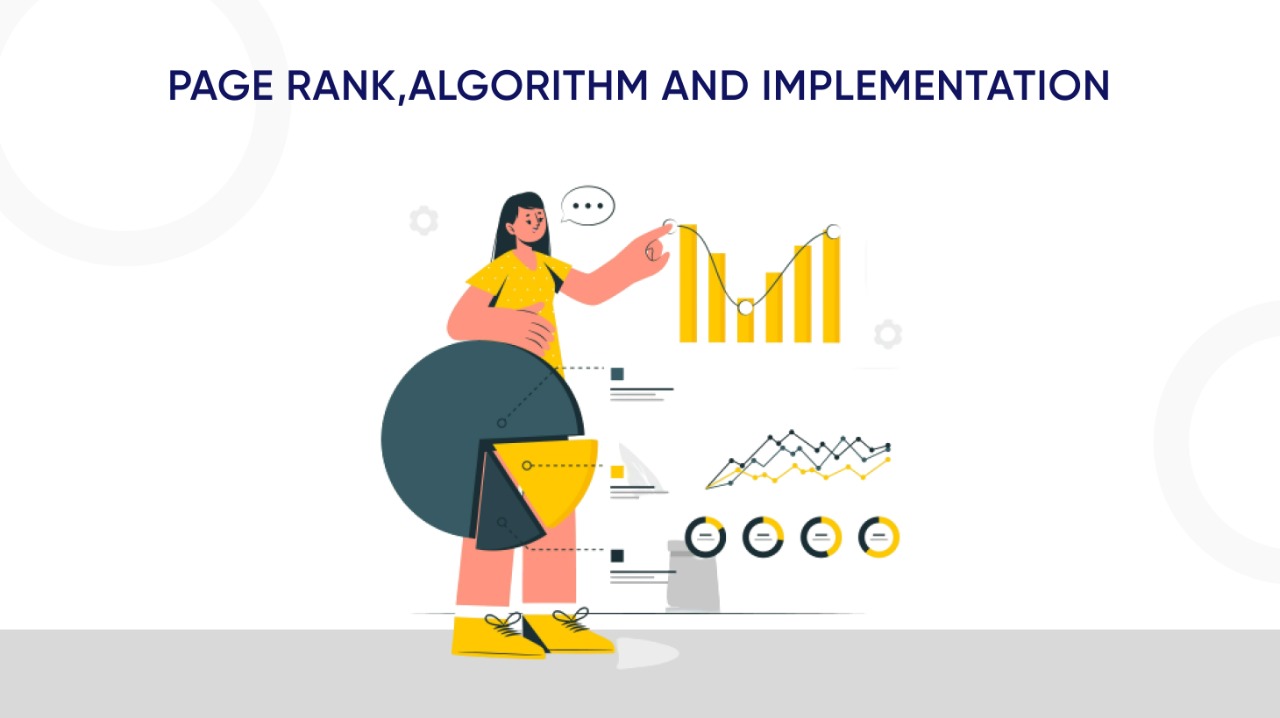PageRank is a system for ranking web pages developed by Google's founders, Larry Page and Sergey Brin, at Stanford University. And what is essential to understand is that PageRank is all about links. The SEO Services Company would give the appropriate suggestions. Websites are rewarded for unique, quality content that is regularly updated.
The higher the PageRank of a link, the more authoritative it is. We can simplify the PageRank algorithm to describe it as a way for the importance of a webpage to be measured by analyzing the quantity and quality of the links that point to it.
The PageRank algorithm has been extended to ordering papers in citation networks, predicting traffic in traffic networks, finding the best teams and athletes in sports networks, and ranking systems that contributed to anomalous behaviour in debugging. Based on the wide range of its applications, the PageRank algorithm must give the right results.
Page Rank Score
Perhaps unsurprisingly, PageRank is a complex algorithm that assigns a score of importance to a page on the web. But as far as the everyday SEO was concerned, PageRank was a linear representation of a logarithmic scale between 0 and 10 displayed on the PageRank toolbar. A PageRank score of 0 is typically a low-quality website, whereas, on the other hand, a score of 10 would represent only the most authoritative sites on the web.
Page rank algorithm by Google search for ranking websites in their SERP (Search Engine Results Page). It measures the importance of a website page. PageRank is a way of measuring the importance of website pages.
PageRank works by counting the number and quality of links to a page to determine a rough estimate of the website's importance. The underlying assumption is that more important websites will likely receive more links from other websites. It is not the only algorithm used by Google to order search engine results, but it is the company's first and best-known algorithm.
Page Rank Algorithm
The PageRank algorithm outputs a probability distribution to represent the likelihood that a person randomly clicking on links will arrive at any particular page. PageRank can be calculated for collections of documents of any size. It is assumed in several research papers that the distribution is evenly divided among all records in the collection at the beginning of the computational process.
The PageRank Implementation requires several passes, called "iterations", through the collection to adjust approximate PageRank values to more closely reflect the actual theoretical value. It was the first algorithm by Google; after this, many other algorithms have been there by Google.
The PR algorithm will output a probability distribution to represent a person's likelihood of randomly clicking on links and arriving at a page. PR can be there for the collection of documents of all sizes. The PR requires several passes known as iterations through collections to adjust approximate Page Rank values more closely reflecting the theoretical value.
Factors That Influence PageRank
Of course, there are, and were, factors that influence PageRank. We have already covered that not all links are equal in the PageRank they pass. Here are the key factors.
1. Anchor text
2. The likelihood of being clicked
3. Internal links
4. Nofollow links
You need to understand not only what these influencing factors are but also how they apply to SEO which you need to use, and which to avoid as part of your tactics.
Anchor Text
Google's original paper referred to link anchor text by stating that "The text of links is treated specially in our search engine" and that "anchors often provide more accurate descriptions of web pages than the pages themselves." In the early days of Google, anchor text had a key influence on page rankings.
If you wanted to rank for "red shoes," the more links you had that used that term as an anchor text, the higher you could rank. Link building became a race between SEOs to see who could gain as many exact match anchor text links as possible from high PageRank pages. It worked (for some time) but was sheer manipulation of Google's Webmaster Guidelines; specifically, this is considered a link scheme.
Fast forward to 2021, and the overuse of anchor text manipulation will result in toxic links and potentially a manual penalty or algorithmic adjustment.
The Likelihood of a Link Being Clicked
The likelihood of a link being clicked is a crucial influencer of PageRank and is referenced by Google's reasonable surfer patent. The original PageRank algorithm assigned equal weight to links on a page.
Whereas, 2004's Reasonable Surfer patent indicates that not all links are as likely as one another to be clicked, giving a different value to different links, depending upon their potential to be connected. This concerns the Google search algorithm.
An example of links that are less likely to be clicked include terms of service links and banner advertisements but could also include links in a footer or a similar location.
Internal Links
Internal linking is a powerful SEO tactic, and there is a good reason.
You can help PageRank to flow through your site with a solid internal linking structure. Once you understand how this works, it is easy to see why this tactic can have such a noticeable impact, especially when linking to pages that are not linked to from anywhere else.
Disadvantages of Pagerank
1. One of the limitations of the PageRank algorithm is that its ordering does not favour current events. According to the algorithm, old pages typically have more votes because they have more links from other reputable pages. A new page will not be as reputable until it has gained exposure and links from other pages.
2. As a web user, one would like to see the most recent research papers in a particular field. Another limitation is that its use in ranking papers in the citation network does not account for the size of a lot.
3. The number of citations per paper in each field varies widely depending on the discipline. For example, an average paper is cited about six times in life sciences, three times in physics, and about once in mathematics. The algorithm is, therefore, more likely to give a paper in a mathematics field a lower score than a paper in a life sciences field.
4. It is prone to manipulation through link selling. Initially, Google used to display a page's rank on the browser, but this caused a lot of controversies and made this metric private.
5. During the era of public PageRank, a market emerged for link selling as Search Engine Optimizers (SEOs) found a way to manipulate the algorithm by creating more traffic to their pages. The impact of artificially creating more traffic to a page was that the page was unfairly higher in scores, according to the algorithm.
6. Another limitation is that it unleashed link spamming. Link spamming refers to leaving links to a page unnecessarily on various platforms. To counter this development, Google introduced the Nofollow attribute in the link tag in HTML to prevent such links from passing PageRank votes along.
The PageRank algorithm opened up web search to both advancement and manipulation, but with optimizations, we can take full advantage of its benefits.
Python-based development and other research are still happening. It is increasingly used in many fields, for example, in ranking users in social media etc.
The PageRank algorithm is fascinating because it starts from a complex problem and ends with a straightforward solution.

















Post Comments